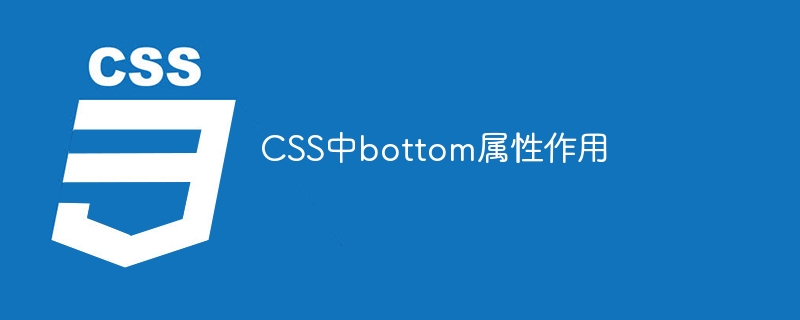

The bottom property in CSS is used to set the bottom edge position of an element relative to its parent element. By adjusting the value of the bottom attribute, you can change the vertical position of the element. The following will introduce the role and usage of the bottom attribute in detail, and provide some code examples to illustrate.
Using pixel values
You can use pixel values to specify the distance of an element from the bottom edge of the parent element. For example, the following code positions an element 100 pixels from the bottom edge of its parent element:
.element { position: absolute; bottom: 100px; }
Using percentage values
In addition to using pixel values, you can also use percentage values to set elements The distance from the bottom edge of the parent element. Percentage values are calculated relative to the height of the parent element. For example, the following code sets the distance of the element from the bottom edge of the parent element to 50% of the height of the parent element:
.element { position: absolute; bottom: 50%; }
inherit means that the element will inherit the bottom attribute value of the parent element. For example, the following code sets the element's bottom attribute value to inherit the bottom attribute value of the parent element:
.parent { position: relative; bottom: 100px; } .child { position: absolute; bottom: inherit; }
Code Example
Here is a complete code example that shows how to use bottom property to position the bottom edge of an element:
In the above example, a container element is created and set to relative positioning. Then create an element inside the container and use absolute positioning, setting the bottom property to 20px, so that the element is 20 pixels away from the bottom edge of the container.
By reading this article, we understand the role and use of the bottom attribute in CSS, and provide some code examples to illustrate. By using the bottom attribute, we can flexibly adjust the position of the element in the vertical direction, making the page layout more free.
The above is the detailed content of How to use the bottom attribute in CSS. For more information, please follow other related articles on the PHP Chinese website!